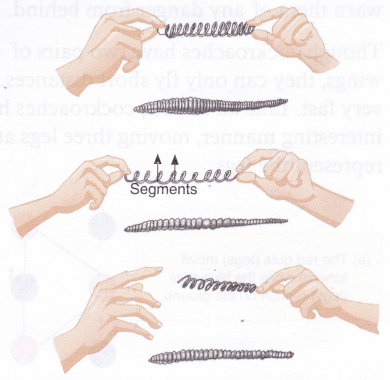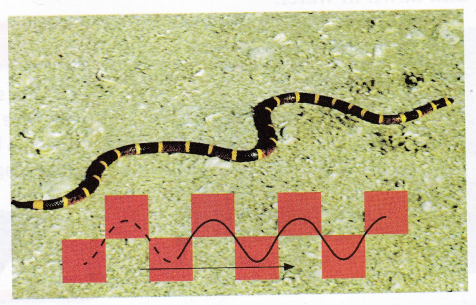Movement of Fish in Water
Fish are vertebrates. All vertebrates have an internal skeleton made up of bones; a tough, elastic substance called cartilage; or both.
Most fish have a streamlined body – the head and the tail are narrow; the middle portion of the body is broader. This kind of shape offers least resistance to the flow of water and makes it easier for them to swim through water. Aeroplane, ship, and boat also have streamlined shapes to reduce resistance to the flow of air and water.


Fish have fins and a flexible backbone that help them to swim. Most fish have a special structure called swim bladder that can be filled with air or emptied to help them
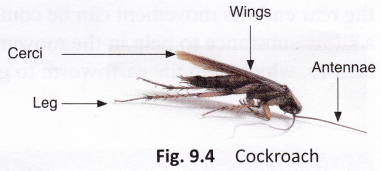

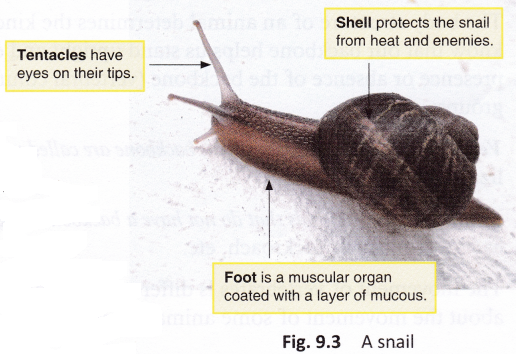 The muscular foot produces wave-like movements that push the snail’s body forward. A trail of mucous is left behind when the snail crawls.
The muscular foot produces wave-like movements that push the snail’s body forward. A trail of mucous is left behind when the snail crawls.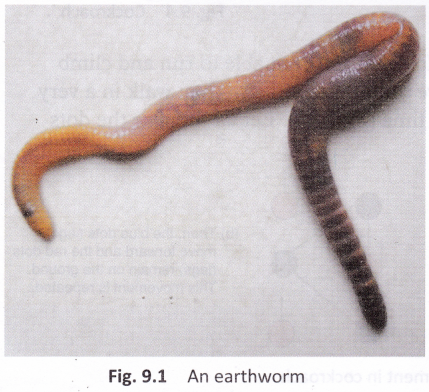 It moves by lengthening and shortening these segments. It extends the front part of the body, keeping the rear end fixed to the ground. Then it fixes the front part and pulls the rear end. Its movement can be compared with that of a spring. Its body secretes a slimy substance to help in the movement. The segments also have tiny, hair-like bristles, which help the earthworm to grip the surface and pull its body forward.
It moves by lengthening and shortening these segments. It extends the front part of the body, keeping the rear end fixed to the ground. Then it fixes the front part and pulls the rear end. Its movement can be compared with that of a spring. Its body secretes a slimy substance to help in the movement. The segments also have tiny, hair-like bristles, which help the earthworm to grip the surface and pull its body forward.